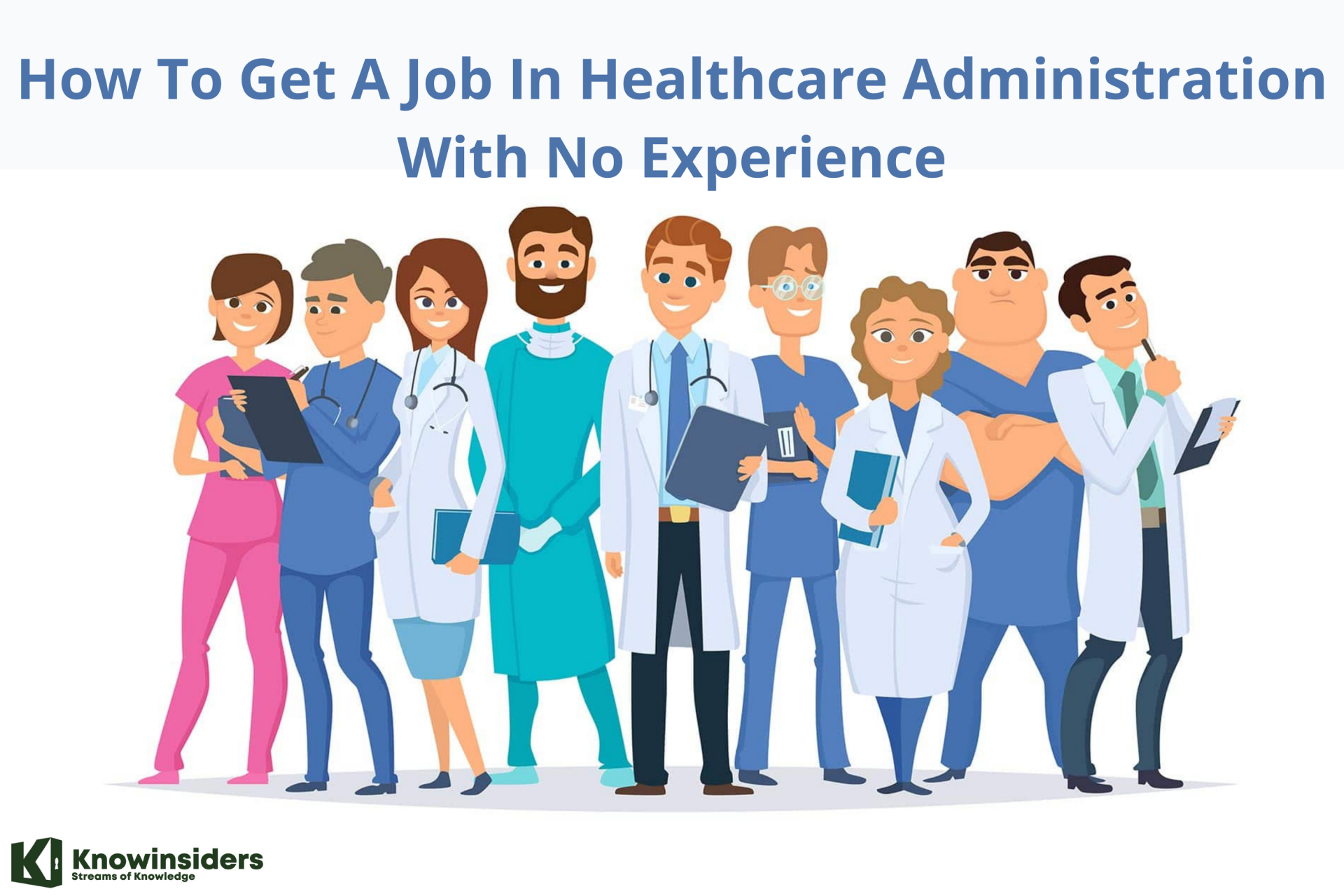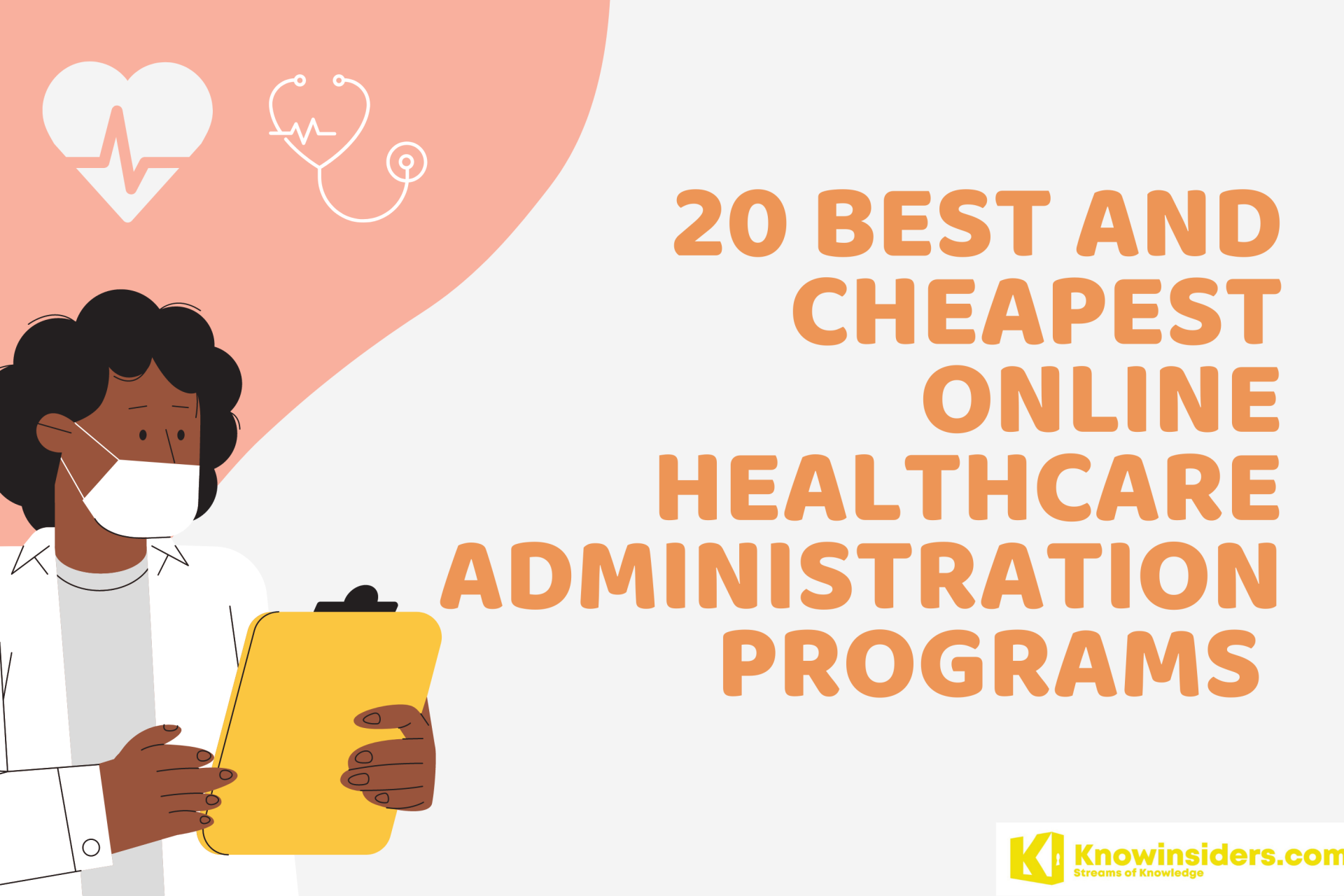Top 10 States With The Best Healthcare in the US Today
 |
| Top 10 States With The Best Healthcare In The US Today Knowinsiders.com |
Depending on where they live, some Americans have better health care options than others.
That’s according to a new report from WalletHub, which found the best and worst states for health care in 2022.
For its report, WalletHub compared all 50 U.S. states and Washington, D.C., based on their cost, access and outcomes of health care using 42 metrics.
Here are top 10 states with the best healthcare in the United States.
What is Healthcare?
 |
| Photo: Shutterstock |
Health care or healthcare is the improvement of health via the prevention, diagnosis, treatment, amelioration, or cure of disease, illness, injury, and other physical and mental impairments in people. Health care is delivered by health professionals and allied health fields. Medicine, dentistry, pharmacy, midwifery, nursing, optometry, audiology, psychology, occupational therapy, physical therapy, athletic training, and other health professions are all part of health care. It includes work done in providing primary care, secondary care, and tertiary care, as well as in public health.
Access to health care may vary across countries, communities, and individuals, influenced by social and economic conditions as well as health policies. Providing health care services means "the timely use of personal health services to achieve the best possible health outcomes".
Top 10 States With The Best Healthcare in the US
1. Rhode Island
 |
| Photo: Travel + Leisure |
States use the Commonwealth Fund’s 2019 Scorecard on State Health System Performance to identify places where their health care policies are on track and areas that need improvement. Using the Scorecard, states can compare their improvement to others, and see how they stack up. In the most recent edition, released in June, Rhode Island improved on the most health system performance indicators tracked over time, followed by Missouri, Washington, West Virginia, and Arkansas.
Rhode Island particularly made strides in the areas of coverage and behavioral health. The state uninsured rate among adults dropped from 17 percent in 2013 to 7 percent in 2015 and 6 percent in 2017. In addition, the percentage of adults with any mental illness reporting an unmet need dropped from 27 percent in 2010–11 to 18 percent in 2014–16. The state also saw significant reductions in the percentage of children with unmet mental health needs.
These improvements did not happen by chance. What actions did policymakers take to drive progress and what work lies ahead?
Making Progress Through Clear Priorities and State Leadership
In 2014, Governor Gina Raimondo came into office fully committed to the Affordable Care Act, including Rhode Island’s state-based health insurance marketplace and expanded Medicaid eligibility.
Another early administration priority was making sure behavioral health care was as available and affordable as medical care. The opioid epidemic was hitting Rhode Island hard, making access to treatment for mental health and substance use disorder a top concern.
Coverage expansion. The decision to create a state-based marketplace, HealthSource Rhode Island (HSRI), was instrumental in helping the state make gains in coverage and affordability. The state has its own funding for marketing and navigators who help people understand and choose health plans. This has helped shield residents from federal outreach cuts. The state’s commitment also helped when the Trump administration decided to end marketplace cost-sharing-reduction subsidies. The state’s Office of the Health Insurance Commissioner (OHIC) worked with the state marketplace HSRI to protect consumers by building price increases to cover the loss of subsidies into silver-level health plans and keeping premiums lower in the other plans. HSRI plans offered among the lowest state-based marketplace premiums in the country. During last year’s open-enrollment period, HSRI saw a 5 percent increase in new and overall customers.
Access to behavioral health. In 2015, Governor Raimondo issued an executive order to establish the Overdose Prevention and Intervention Task Force, which has guided state reforms. The opioid crisis also has led to more open conversations about mental health and to improved relationships between first responders and communities. To facilitate these relationships, Rhode Island now requires police officers receive training to recognize behavioral health issues and help connect individuals with the care they need.
Rhode Island experienced a decline in overall overdose deaths, from 336 in 2016 to 314 in 2018. Community programs and pharmacies have worked hard to get naloxone, used to counter the effects of opioid overdose, into the hands of people who need it. Rhode Island was also the first state to offer medication-assisted opioid treatment in prison. Community health workers follow up on inmates after release to ensure treatment is continued. Fatal overdoses declined by 60 percent among people leaving detention from 2016 to 2017, and continued to drop in 2018.
OHIC also has prioritized integrating behavioral health into the primary care setting as a cost-effective way of increasing access to such services. Studies have shown that integrated care improves depression and anxiety outcomes, along with quality of life, while reducing the total cost of care.
Additionally, OHIC has been working on encouraging parity between medical and behavioral health in the insurance market by reviewing insurers’ coverage documents. It is focusing on limiting mental health benefit exclusions and ensuring the states’ major carriers are in compliance with the laws related to coverage for mental health and substance use disorder treatment. As a result, the four major insurers have agreed to discontinue prior authorization requirements for certain medication-assisted treatments.
Maintaining Momentum
In 2018 an HSRI/OHIC workgroup was formed to develop policy options to mitigate the potential impact of federal changes on health coverage costs, consumer choice, and access. The group recommended pursuing a Section 1332 waiver to establish a reinsurance program to reduce premium increases in the individual market; implementing a state-level requirement that individuals have health insurance to offset the impact of the federal health insurance mandate penalty repeal; and establishing OHIC’s regulatory authority over short-term limited duration plans. All three recommendations were signed into law on July 5.
In addition, recent state legislation has expanded OHIC’s authority related to establishing behavioral health parity, such as a law giving it authority over health plans and third-party organizations that conduct benefit reviews.
Addressing population health challenges demands a concerted effort. Rhode Island is fortunate to have a culture of collaboration among health care leaders, coupled with strong political commitment to health system improvement.
2. Massachusetts
The Massachusetts health care reform, commonly referred to as Romneycare, was a healthcare reform law passed in 2006 and signed into law by Governor Mitt Romney with the aim of providing health insurance to nearly all of the residents of the Commonwealth of Massachusetts.
The law mandated that nearly every resident of Massachusetts obtain a minimum level of insurance coverage, provided free and subsidized health care insurance for residents earning less than 150% and 300%, respectively, of the federal poverty level (FPL) and mandated employers with more than 10 full-time employees provide healthcare insurance.
Among its many effects, the law established an independent public authority, the Commonwealth Health Insurance Connector Authority, also known as the Massachusetts Health Connector. The Connector acts as an insurance broker to offer free, highly subsidized and full-price private insurance plans to residents, including through its web site. As such it is one of the models of the Affordable Care Act's health insurance exchanges. The 2006 Massachusetts law successfully covered approximately two-thirds of the state's then-uninsured residents, half via federal-government-paid-for Medicaid expansion (administered by MassHealth) and half via the Connector's free and subsidized network-tiered health care insurance for those not eligible for expanded Medicaid. Relatively few Massachusetts residents used the Connector to buy full-priced insurance.
After implementation of the law, 98% of Massachusetts residents had health coverage. Despite the hopes of legislators, the program did not decrease total spending on healthcare or utilization of emergency medical services for primary care issues. The law was amended significantly in 2008 and twice in 2010 to make it consistent with the federal Affordable Care Act (ACA). Major revisions related to health care industry price controls were passed in August 2012, and the employer mandate was repealed in 2013 in favor of the federal mandate (even though enforcement of the federal mandate was delayed until January 2015).
3. Hawaii
Hawaii’s success owes much to the state’s trailblazing health system and its long history of near-universal health insurance.
Forty years ago, the state became the first to require employers to provide health benefits, codifying a tradition that grew out of Hawaii’s agrarian past, when sugar and pineapple plantations employed doctors to care for their workers.
That system has led to some of the highest rates of coverage and best access to medical care in the country.
But differences in local health systems nationwide — including disparities in insurance coverage — also likely play an important role, according to an analysis of local and national healthcare data, a review of academic studies, interviews with scores of experts, and visits to communities across the country.
Nearly everyone is covered in the nation’s healthiest places, including Hawaii, Massachusetts and parts of the Upper Midwest. By contrast, fewer than 7 in 10 working-age adults have health insurance in parts of Texas, Florida and the Deep South — areas with some of the highest rates of death from preventable illnesses.
In Texas, which has the lowest rate of insurance coverage in the nation, residents are 40% more likely to die from breast cancer than they are in Hawaii, according to federal cancer data.
These disparities may grow even larger in coming years as the Affordable Care Act is implemented unevenly around the country. Although the law offers states the opportunity to guarantee their residents insurance, only about half the states have elected to do so.
In Hawaii, health insurance has reshaped healthcare, from the smallest clinics to major urban hospitals, affecting when patients are treated and even how they recover.
4. Minnesota
MinnesotaCare is a health care program for uninsured working Minnesotans. MinnesotaCare does not pay for past medical bills. MinnesotaCare is for Minnesota residents who meet income and other eligibility guidelines. MinnesotaCare is paid for with state and federal tax dollars, provider taxes and premiums paid by people who are enrolled.
It takes 30-45 days to process the application. Enrollees pay a monthly premium based on family size, income and the number of people in their family who are covered. Children under age 21 who meet a lower income guideline pay a fixed premium of $4 a month. Coverage starts the first of the month after payment is received. Continued coverage depends on timely payment of premiums. MinnesotaCare enrollees must complete a renewal application every year.
Eligibility requirements for MinnesotaCare:
- Live in Minnesota.
- Meet income and asset guidelines.
- Be a U.S. citizen or a qualifying noncitizen.
- Not currently insured or covered by other health insurance within the last four months (this includes Medicare). Some exceptions apply for people coming from MA and children who meet a lower income guideline.
- No access to employer-paid insurance with a current employer where the employer pays 50 percent or more of the monthly premium. Does not apply to children who meet lower income guidelines.
- Current employer has not withdrawn employer-paid (50 percent or more) health insurance in the past 18 months.
- Asset limit of $10,000 for one person, $20,000 for two or more people. (Pregnant women and children under 21 years old have no asset limits.
Applications require proof of income, such as federal 1040 tax forms, W-2 forms, wage statements or pay stubs.
5. Maryland
The Maryland Health Connection (administered by the Maryland Health Benefit Exchange) is the health insurance marketplace in the U.S. state of Maryland, created in accordance with the Patient Protection and Affordable Care Act.
The marketplace is offered to individuals and families who are not covered through their employers. It allows enrollees to compare health insurance plans and provides those who qualify with access to tax credits. It also provides access to Medicaid enrollment for low-income Marylanders. Enrollment started on October 1, 2013. As of the 2019 calendar year, 156,963 people were enrolled in private health plans, 39,720 people were enrolled in stand-alone dental plans, and 1,076,175 people were enrolled in Medicaid through Maryland Health Connection.
Maryland Health Connection opened two emergency special enrollment periods for Marylanders who needed health insurance during the COVID-19 pandemic in the United States. Maryland had the longest special enrollment period of all U.S. states in 2020. The first special enrollment period ran from March 16, 2020, until July 15, 2020, and more than 54,000 people enrolled in health coverage. The second special enrollment period was announced on August 7, 2020, and is intended to run until December 15, 2020.
Maryland is the site of two big experiments in containing health care costs. The first: Since the 1970s, the state has set the prices hospitals can charge for medical care, known as all-payer rate setting.
The second experiment: Since 2014, it’s also capped how much health spending can grow overall, including how much revenue each hospital can take in.
These kinds of regulations are common abroad — France, Japan, Switzerland, the Netherlands, and Germany all have some variation of rate setting and set budgets for health care spending. But here in the United States, Maryland stands alone.
In 49 of the 50 states, more sick patients in hospital beds means more revenue. And because the government negotiates lower rates for Medicaid and Medicare, patients on those plans are less desirable than privately insured patients, who can be charged more to boost hospitals’ bottom line.
Maryland has become a model for other states. Pennsylvania, for instance, has started experimenting with a small-scale version of the global budget system to keep rural hospitals afloat. But there are still problems with its model: On its own, the system hasn’t shown insurance premiums dropping, employers can still push more costs onto workers, and drug companies are increasing prices rapidly.
Perhaps more important, adopting Maryland’s model nationally won’t directly extend health coverage to the almost 27 million uninsured Americans. Still, any attempt to expand health care coverage in America — whether through Medicare-for-all or a more robust public option — will have to confront the issue of cost.
6. Vermont
 |
| Photo: Getty Images |
A recent study reveals some important Vermont statistics, including that the state ranks near the top in healthcare. Vermont placed fifth overall in the rankings, with New England states Massachusetts and Connecticut in the top two spots, North Dakota third and Iowa fourth. Vermont ranked well for total insurance coverage, overall health and infant survival, while struggling with staffing and insurance premium costs.
MoneyRates.com recently released its second annual healthcare report, finding sharp divisions from state to state and the District of Columbia (D.C.).
Using data from the US Census Bureau and the Kaiser Family Foundation, the study ranks each state's performance in eight categories. A comparison tool enables readers to contrast relevant healthcare delivery factors among states.
- Vermont ranked first for infant survival, and came in the top ten for health insurance coverage and reported health status.
- In physicians' office staffing and affordability of health insurance coverage, Vermont was rated as “frail."
Healthcare has already emerged as one of the leading issues in the 2020 presidential campaign.
While healthcare is a national issue, it varies greatly from state to state.
This Best States for Healthcare 2020 study highlights just how wide the differences can be.
7. Colorado
 |
| Photo: TripAdvisor |
Healthcare policy in Colorado involves the creation and implementation of laws, rules, and regulations for managing the state's healthcare system. The healthcare system consists of services provided by medical professionals to diagnose, treat, and prevent mental and physical illness and injury. The system also encompasses a wide range of related sectors, such as insurance, pharmaceuticals and health information technology.
According to the National Conference of State Legislatures, the 50 state legislatures collectively "make thousands of health policy decisions each year," not including the decisions made by local governments, which often oversee hospitals, and private bodies, such as insurers. These decisions can include budget appropriations, requirements for doctors obtaining their licenses, which services are covered by insurance, how personal health information is managed, and which immunizations children must receive, among many others.
Healthcare policy affects not only the cost citizens must pay for care, but also their access to care and the quality of care received, which can influence their overall health. A top concern for policymakers is the rising cost of healthcare, which has placed an increasing strain on the disposable income of consumers as well as on state budgets. Other issues in healthcare policy include state Medicaid expansions, health information technology and privacy, uninsured and underinsured portions of the population, a shortage of primary care physicians, and mental healthcare access and coverage.
Healthcare spending and costs have become a top priority for both state and federal legislators amid growing concern from consumers and employers. Healthcare spending as a percentage of the national gross domestic product (GDP) has increased from 5 percent in 1960 to reach 17.4 percent in 2009, or over one-sixth of the nation's economy, where it remained steady through 2013. Total healthcare spending in both the public and private sectors amounted to $2.9 trillion in 2013. Federal, state and local governments were responsible for about 43 percent of that spending. Projections have shown that if healthcare spending continues to increase at its current rate, it will reach 19.3 percent of GDP in 2023.
8. Connecticut
 |
| Photo: Wikipedia |
Healthcare policy in Connecticut involves the creation and implementation of laws, rules, and regulations for managing the state's healthcare system. The healthcare system consists of services provided by medical professionals to diagnose, treat, and prevent mental and physical illness and injury. The system also encompasses a wide range of related sectors, such as insurance, pharmaceuticals and health information technology.
According to the National Conference of State Legislatures, the 50 state legislatures collectively "make thousands of health policy decisions each year," not including the decisions made by local governments, which often oversee hospitals, and private bodies, such as insurers. These decisions can include budget appropriations, requirements for doctors obtaining their licenses, which services are covered by insurance, how personal health information is managed, and which immunizations children must receive, among many others.
Healthcare policy affects not only the cost citizens must pay for care, but also their access to care and the quality of care received, which can influence their overall health. A top concern for policymakers is the rising cost of healthcare, which has placed an increasing strain on the disposable income of consumers as well as on state budgets. Other issues in healthcare policy include state Medicaid expansion, health information technology and privacy, uninsured and underinsured portions of the population, a shortage of primary care physicians, and mental healthcare access and coverage.
9. Maine
 |
| Photo: Shutterstock |
Healthcare policy in Maine involves the creation and implementation of laws, rules, and regulations for managing the state's healthcare system. The healthcare system consists of services provided by medical professionals to diagnose, treat, and prevent mental and physical illness and injury. The system also encompasses a wide range of related sectors, such as insurance, pharmaceuticals and health information technology.
According to the National Conference of State Legislatures, the 50 state legislatures collectively "make thousands of health policy decisions each year," not including the decisions made by local governments, which often oversee hospitals, and private bodies, such as insurers. These decisions can include budget appropriations, requirements for doctors obtaining their licenses, which services are covered by insurance, how personal health information is managed, and which immunizations children must receive, among many others.
Healthcare policy affects not only the cost citizens must pay for care, but also their access to care and the quality of care received, which can influence their overall health. A top concern for policymakers is the rising cost of healthcare, which has placed an increasing strain on the disposable income of consumers as well as on state budgets.
10. Iowa
 |
| Photo: Getty Images |
Healthcare policy in Iowa involves the creation and implementation of laws, rules, and regulations for managing the state's healthcare system. The healthcare system consists of services provided by medical professionals to diagnose, treat, and prevent mental and physical illness and injury. The system also encompasses a wide range of related sectors, such as insurance, pharmaceuticals and health information technology.
According to the National Conference of State Legislatures, the 50 state legislatures collectively "make thousands of health policy decisions each year," not including the decisions made by local governments, which often oversee hospitals, and private bodies, such as insurers. These decisions can include budget appropriations, requirements for doctors obtaining their licenses, which services are covered by insurance, how personal health information is managed, and which immunizations children must receive, among many others.
Healthcare policy affects not only the cost citizens must pay for care, but also their access to care and the quality of care received, which can influence their overall health. A top concern for policymakers is the rising cost of healthcare, which has placed an increasing strain on the disposable income of consumers as well as on state budgets.
Other issues in healthcare policy include
state Medicaid expansion,
health information technology and privacy,
uninsured and underinsured portions of the population,
a shortage of primary care physicians, and
mental healthcare access and coverage.
In general, employers have been the dominant source of health insurance for individuals since the late 1940s and 1950s. This can be at least partially attributed to the income tax exemption granted to employers for payments made toward health insurance for employees. The second major sources of health insurance are the state and federal governments, which jointly provide Medicaid for low-income individuals while the federal government sponsors Medicare for the elderly and disabled.
In 2013, about 54 percent of Iowa residents were insured through their employers. Equal percentages were covered by Medicaid and Medicare, 14 percent each. Approximately 9 percent of Iowa’s population was uninsured in 2013, a much lower percentage than the national rate.
The 1980s saw a peak in the percentage of people who were receiving health coverage through their employers, with a continuous decline in the rate thereafter. A study by researchers at the University of Minnesota’s State Health Access Data Assistance Center, which was funded by the Robert Wood Johnson Foundation, found that despite the tax exemption, fewer employers are choosing to offer health coverage to their employees, and when it is offered, fewer employees are enrolling.
Between 2000 and 2012, employer-sponsored insurance in Iowa declined by 11.6 percentage points. Meanwhile, Medicare enrollment in Iowa grew by about 0.5 percentage points from 2000 to 2012, a smaller increase than any of its neighboring states. Medicaid enrollment grew by 7.6 percentage points.
How Health Insurance WorksPut simply, health insurance is a way to pay for your health care. Your health insurance protects you from paying the full costs of medical services when you’re injured or sick. And it works the same way your car or home insurance works: you or your employer choose a plan and agree to pay a certain rate, or premium, each month. In return, your health insurer agrees to pay a portion of your covered medical costs. Some years you may require lots of medical services, other years you may need less, but the whole point of having health insurance is so you can avoid paying the full cost of medical services on your own. When you need health care, you and your health insurer share the covered medical costs. If medical costs are exceptionally high for the risk pool, your health insurer may have to adjust the rates from time to time for those insured. Your plan outlines your out-of-pocket costs for each service — whether it’s a copay, deductible, or co-insurance. Your premium, or how much you pay for your health insurance each month, covers some or all of the medical care you receive — everything from prescription drugs and doctors’ visits to health improvement programs and customer service. Most people choose a health insurance plan based on monthly cost, as well as the benefits and medical services the plan covers. But there are other factors to consider as well, like what you will be required to pay when you see a doctor or visit a health care facility. |
 Top 20 Best Healthcare Administration Jobs For Recent Graduates With No Experience Top 20 Best Healthcare Administration Jobs For Recent Graduates With No Experience This guide will shed light on the top 20 incredible entry-level healthcare administration jobs for recent graduates without experience! |
 Simple Tips To Get A Job In Healthcare Administration With No Experience Simple Tips To Get A Job In Healthcare Administration With No Experience If you want to apply for a healthcare administration job but have no experience, keep reading this post to know the steps as well as ... |
 Top 10 Highest Paying Healthcare Administration Jobs In The US Top 10 Highest Paying Healthcare Administration Jobs In The US Not sure which 10 highest paying healthcare administration jobs in the US? Take a look at the top 10 highest-paying health care management jobs below |
 20 Best & Cheapest Online Healthcare Administration Programs 20 Best & Cheapest Online Healthcare Administration Programs This post guides the top 20 best and cheapest programs that offer the most affordable online bachelor in healthcare administration degrees. |


























